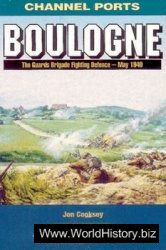The Terminal Classic period has been identified archaeologically through various types of evidence. Changes in ceramic production hail this transition, as reflected by the identification of new ceramic types for each period in northern Belize (D. Chase 1982b; Graham 1987b; Valdez 1987, 1994; Walker 1990). Lithic-type changes also have been used to identify this period (Hester 1985; Hester and Shafer 1991b; Roemer 1984; Michaels 1987, 1994; Michaels and Shafer 1994; Shafer and Hester 1983,1988). Studies from Colha, Belize, document an increase in blade production and distribution during the Terminal Classic period that may correlate with an increase in warfare (Masson 1989, 2001; Roemer 1984). The relationship of these changes in economic production to political changes is poorly understood for the northern Belize subregion.
In the Petexbatun area, ceramic trends documented by Foias and Bishop (1997) indicate that political collapse profoundly disrupted elite gift exchange networks initially, and eventually, localized utilitarian production. Such impacts varied across the southern lowlands landscape (Chase and Rice 1985; Freidel 1986d; Sabloff and Andrews 1986b; Sabloff and Henderson 1993b). More data are needed to identify subregional variation in adaptations to political and economic changes of the Terminal Classic period. Rice (1987a) has characterized this period as one of regionalism in ceramic traditions. For this reason, societal changes of this period should be examined first on a local basis, as patterns varied greatly from coastal zones to the Peten interior (Culbert 1988). To what extent did political collapse affect local economies? Some scholars cite evidence suggesting that community production economies were fairly autonomous even during the height of Classic-period political hierarchies (Hester and Shafer 1994; King and Potter 1994;McAnany 1989,1993; Potter and King 1995; Rice 1987a; Fedick 1991). and utilitarian production was not tightly centralized through political institutions.
Finely crafted items were reserved for the elite class (Ball 1993b; Rathje 1973: 440) and their production and distribution were quite different from that observed for utilitarian items, although utility vessels such as jars may have been used to transport elite goods (Mock 1994a, 1999). Prestige products, such as finely made polychrome vases (Reents-Budet 1994) or eccentric flints (Gibson 1986; Hester and Shafer 1994), have been identified as part of a low-volume system of production for limited, exclusive distribution separate from that of utilitarian production and exchange spheres (Ball 1993b; Gibson 1986; Hester and Shafer 1994). Some rare trade pottery found at coastal sites in Belize may represent more highly valued items. It is not known, however, whether the rarity of these items is due to their lack of significance or their high value in coastal trading networks. Studies thus far have not identified a prestigious pottery gift exchange network for the Terminal Classic in northeastern Belize. In fact, similar studies of the Petexbatun (Foias and Bishop 1997) and sites near Xunantunich (LeCount 1999) indicate that inter-elite gift exchange was on the decline during the Terminal Classic period. This chapter focuses primarily on common, utilitarian pottery types, although the presence of exotic trade vessels or well-made, idiosyncratic vessels local to northeastern Belize is discussed for the coastal sites.
Production of utilitarian goods occurred primarily at the community level during the Late Classic, Terminal Classic, and Postclassic periods (Rands and Bishop 1980; Rice 1987a). Little is known about specific communities where production may have taken place, with a few exceptions. Graham traces the development of possible community pottery forms made at Lamanai (1987b), and the analysis of distributions of Late Classic polychrome pottery helps narrow down the location of production sites for these ceramics (Mock 1994a, 1997b). Pottery firing hearths may have been identified at the Postclassic settlement of Laguna de On (Masson 2000). Communities specialized to varying degrees in particular items for regional exchange or trade (Hester and Shafer 1994; McKillop 1989, 1996; Mock 1994a, 1999; Rands and Bishop 1980; Rice 1987a; Shafer and Hester 1983). Intercommunity exchange seems to have been commonplace either directly or through regional markets (Freidel 1986d; McAnany 1991; Masson and Freidel 2002; West 2002).
Some scholars note the appearance of new artifacts or architectural attributes suggesting the intrusion of foreigners in Belize and other areas of the lowlands including Peten, Pasion, and northwestern Yucatan subregions (Andrews and Robles 1986; D. Chase and A. Chase 1982; A. Chase 1983, 1986; Fox 1987; Rice and Rice 1985; D. Rice 1986: 317-321; Sabloff and Willey 1967; Thompson 1970: 42; Tourtellot et al. 1992: 91-92; Valdez and Adams 1982; Valdez 1987; Mock 1994b; Hester 1985; Michaels 1987; Willey and Shimkin 1973). Recent examinations have questioned the foreign identity of glyphs and images at sites such as Seibal, however (Stuart 1993: 338-339; Tourtellot and Gonzalez, Chapter 4, this volume). Archaeological evidence has also negated the intrusion hypothesis in the Petexbatun region (Demarest 1997; Foias and Bishop 1997; Wright 1997a). Changing ceramic styles from the Late to Terminal Classic periods, or from the Terminal Classic to Postclassic periods, are often used to identify a break in ethnic continuity. These changes are not consistent from community to community.
The establishment of distant trading ties could also contribute to changes in ceramic styles. Studies of fine-grained changes from quality stratigraphic contexts are needed to answer these questions in the southern lowlands. Ringle et al. (1998) discuss a pan-Mesoamerican stylistic interaction sphere among elites participating in feathered serpent cult symbolism and ritual. This international ideological emulation accompanied the development of extensive trading ties throughout Epiclassic (Terminal Classic) Mesoamerica. Such well-documented elite interaction could also have ushered in changes in ceramic styles. Later in this chapter, the participation of Caye Coco in this pan-Mesoamerican sphere of ideological interaction is described.




 World History
World History









